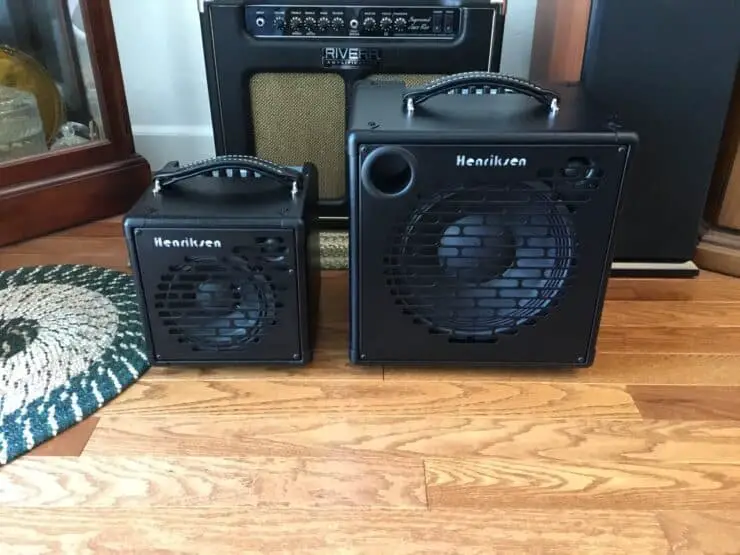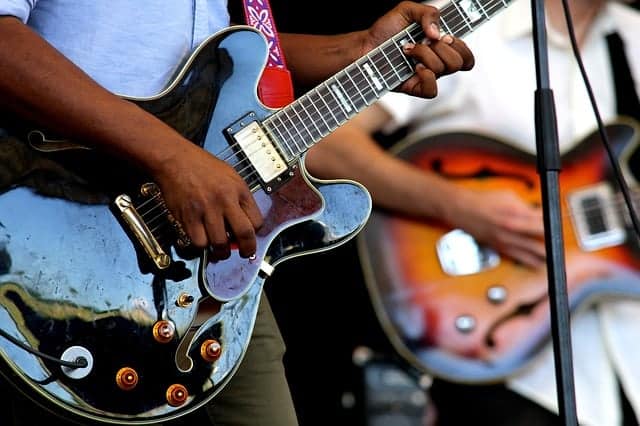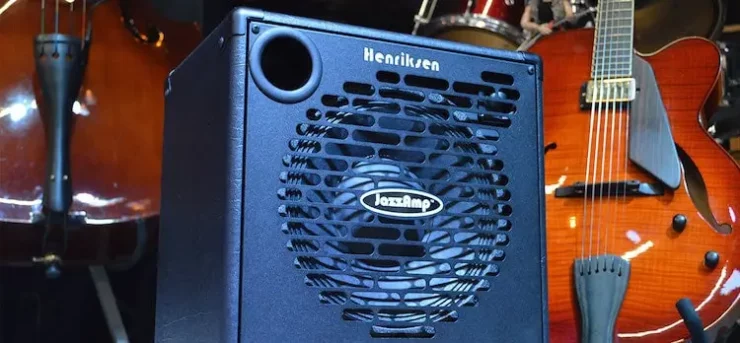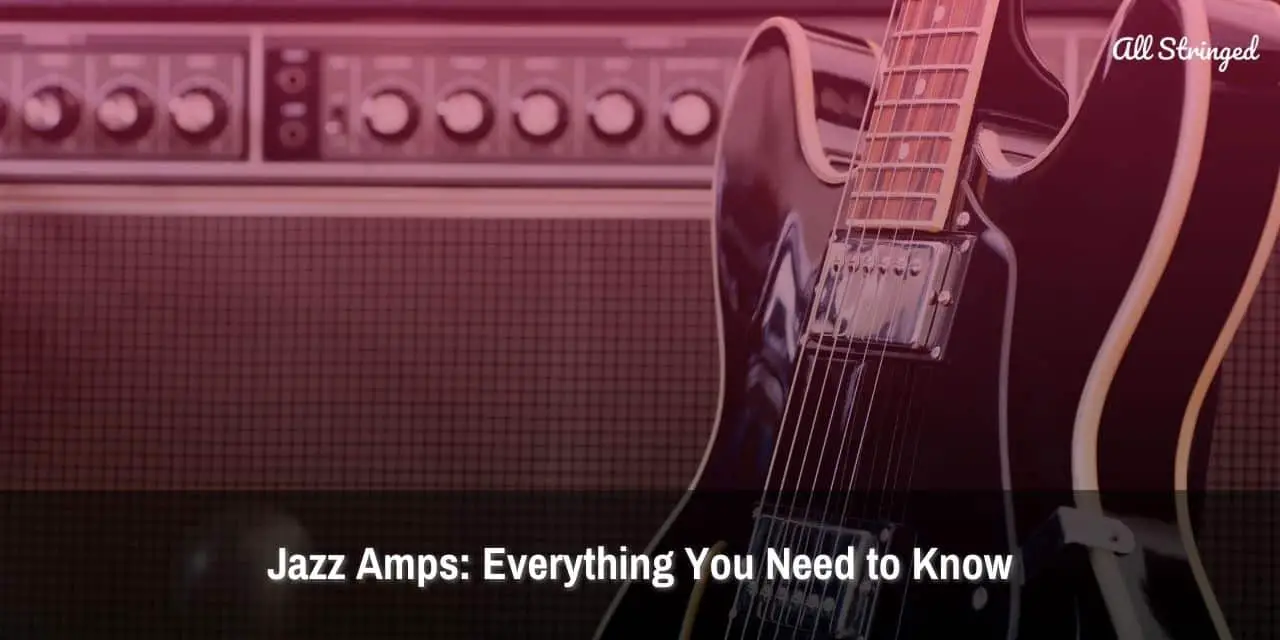Are you a guitar player looking to take your jazz sound to the next level? Whether you are just starting out or are a seasoned musician, you’ll find that a jazz amp is an essential piece of equipment. In this article, we will explore everything you need to know about jazz amps, from understanding their definition to choosing the right one for your needs. Keep reading to make sure you have all the information you have to make the best purchase.
What is a jazz amp?
A jazz amp is essentially a type of guitar amp that is designed for producing a clean and warm tone that perfectly complements the playing style of jazz musicians. Jazz guitarists are generally in search of a specific sound, as it allows them to express their musical ideas with precision and clarity. A jazz amp comes designed to deliver a warm and articulate sound while bringing out the subtleties and nuances of jazz guitar playing.

Jazz amps are characterized by their ability to produce a clean sound while having minimal distortion. This can be achieved by using low-gain amplification, which will allow the guitar’s natural tone to easily shine through. These amps come with a wide frequency response, which will allow them to capture the full range of frequencies that are produced by a guitar.
>>> Click here to read our review about the Top 15 Best Jazz Amps <<<
The most common type of jazz amp will be a tube amp. Tube amps make use of vacuum tubes for amplifying the guitar signal and producing warm, rich tones. The tubes in a tube amp will add a natural compression to the signal, which will allow the guitarist to play softly and still be audible. This compression will also deliver natural sustain to the guitar tone, which will be a desirable characteristic in your jazz guitar playing.
Features of a jazz amp
A jazz amp is an important tool for jazz guitarists who are looking to achieve a warm and clean sound. Jazz amps come with a certain set of features that allow you to shape up the tone and enhance your playing. Here are some of the common features that can be seen in jazz guitar amps –
#1. Low-gain amplification
Jazz guitarists prefer a clean and warm sound with minimal distortion. Low-gain amplification allows the guitar’s natural tone to shine through and helps to capture the nuances and subtleties of jazz guitar playing. The low-gain amplification also adds a natural compression to the signal, which allows the guitarist to play softly and still be heard.
#2. Tube preamp
A tube preamp is an essential component of a jazz amp. Tube amps use vacuum tubes to amplify the guitar signal and produce a warm and rich tone. The tubes in a tube amp add a natural compression to the signal, which helps to smooth out the tone and add a natural sustain. The tube preamp is responsible for the tone shaping and provides a significant impact on the overall sound of the amp.
#3. Reverb
Reverb is a crucial effect for jazz guitar playing. Reverb adds depth and dimension to the sound and can help to create a warm and spacious sound. Jazz amps often come with a built-in reverb effect that allows you to adjust the level and tone of the reverb.
#4. Wide frequency response
Jazz guitar playing involves a wide range of frequencies, and a jazz amp should be able to capture the full range of frequencies produced by the guitar. A wide frequency response allows the amp to reproduce the full spectrum of sound produced by the guitar, from the low bass notes to the high treble notes.
#5. Solid-state power amp
While tube amps are preferred by many jazz guitarists, they can be heavy and require more maintenance than solid-state amps. A solid-state power amp provides the necessary power to drive the speaker and produce the volume required for live performances. Solid-state amps are often more reliable and require less maintenance than tube amps.
#6. A flat EQ response
Jazz guitarists prefer a flat EQ response, which means that all frequencies are balanced. A flat EQ response allows the guitar’s natural tone to shine through and provides a clean and warm sound. The EQ controls on a jazz amp allow you to adjust the frequency response to fine-tune your sound, but the overall goal is to achieve a flat response.
#7. Multiple channels
Many jazz amps come with multiple channels, allowing you to switch between different settings and tones. Multiple channels allow you to set up different tones for different parts of a song, or to switch between clean and distorted sounds.
What makes for a good jazz guitar amp?
A good jazz guitar amp is capable of giving the guitarist a warm, rich sound. A viable jazz amp should have enough power that it can fill a small room or club, but not be loud enough that it overpowers the rest of the players. It should have a clean channel for when the musician wants to play with a clean, crisp sound.
A jazz guitarist’s tone is important when it comes to their voice and musical output. The Blues Junior has made its name in the jazz world due to its warm tone and being lightweight, while also blurring the lines between blues and rock. Meanwhile, the Fender Twin Reverb is an amazing studio amp for a large-room gig. The Mustang is equipped with amp modeling and effects technology for guitarists who want a small practice amp. Fender collaborated with Paul Rivera and redesigned the Super Champ amplifier in 1982 as the sales of the original Super Champ were sluggish. After being discontinued in 1981, Fender decided to release the Princeton Reverb II the following year.
>>> Click here to read more about Guitar Amps <<<
Jazz players were quite pleased with the Hot Rod Deluxe, which is definitely worth the price. The Cube has long been popular among jazz guitarists, both on stage and in rehearsal rooms. Jazz guitarists can also benefit greatly from the sound of Vox, Roland, Polytone, and Peavey.
Some guitarists also prefer the clean, chorus tone of the Roland JC. During their time with the Beatles, John Lennon, George Harrison, and Paul McCartney all played Vox amplifiers. The Henriksen JazzAmp 110 is a great solid-state amp that offers a clean, warm jazz tone that is ideal for small rooms. A 110 can cover any jazz performance, irrespective of the size, from a small room to a large one with a 23-pound weight.
Different types of jazz amps
Jazz guitarists are usually in search of a specific tone that complements their style of playing. To achieve that, they’ll need an amp capable of delivering a warm, clean, and articulate sound. For achieving this, they look for a jazz amp capable of delivering a warm, clean, and articulate sound that allows them to freely express their musical ideas. There are many things to consider when choosing the type of jazz amp. The type of amp can be defined by the sound-producing technology it uses, as the technology used affects the way the music sounds. Here are the different types of jazz amps on the market –
#1. Tube amps
Vacuum tubes are big, glass cylinders in amps that glow orange and eventually get hot the more they are used. Playing through tubes will make you believe that your amp is playing along with you. This way, it’ll feel the notes as you are doing. Although tube technology is rather old and almost obsolete, except in amp design, you simply won’t be able to beat it for producing dynamic, musically responsive tones.
Tube amps are easily the most popular type of jazz guitar amps. They are known for producing warm and rich sound, which gets produced by the vacuum tubes used for amplifying the guitar signal. Tube amps offer a natural compression that allows the guitarist to play softly and still be heard. They’re often used in recording studios and jazz clubs thanks to their ability to produce the classic jazz tone.
#2. Solid-state amps
If you’re budget-conscious, then solid-state amps will be the ideal option. This amp style makes use of transistors and printed circuit boards in its technology. This is among the most popular types of amps, and many jazz musicians actually prefer this tone, including the distorted sound. Solid-state amps are also reliable, light, inexpensive, and offer a variety of tonal and effect possibilities.
Solid-state amps are designed in a way they can replicate the warm and clean sound of tube amps using transistors rather than vacuum tubes. They’re much more affordable than tube amps while also being lighter and easier to transport. These amps require less maintenance compared to tube amps.
#3. Hybrid amps
A hybrid amp successfully combines both solid-state and tube circuitry. In a hybrid amp, the preamp makes use of a tube for creating the initial sound while the power amp uses solid-state circuitry for driving the speakers. This method uses the tube, and it also has the most effect on the sound. It is great for not just your biceps, but your wallet as well.
They successfully combine the best of both worlds. A hybrid amp offers the perfect compromise between the warmth of a tube amp and the reliability of a solid-state amp.
#4. Digital-modeling amps
For tubeless amps that are cheaper and lighter, you can choose digital-modeling amps. It uses computer modeling for creating its sounds. Digital amps come with a wealth of effects and flexibility associated. Modeling technology comes with the advantage of being able to imitate sounds, which is why these amps can emulate the sound of a tube amp conveniently.
Modeling amps use digital technology for replicating the sound of different types of amps. They offer a wide range of tonal options and are used commonly by jazz guitarists who have to switch between different styles of playing. These amps can offer a wide range of effects like delay, reverb, and chorus, which makes them an extremely versatile option for jazz guitarists.
#5. Acoustic amps
Acoustic amps come designed for amplifying the sound of an acoustic guitar. They’re generally used by jazz guitarists who have to play with an acoustic-electric guitar. Acoustic amps provide a clean and transparent sound that allows the natural tone of the guitar to come through. They are often used in small jazz clubs and cafes where the acoustic guitar is a popular choice.
How to choose a jazz guitar amp?
Before you go out and start shopping for a jazz amp, you need to consider the type of music that you’re playing and the features that the amp offers. There are various amazing guitar amps available and they can vary in features and sound.

Experts recommend that you should choose a jazz amp that perfectly matches the style and sound of your instrument. For instance, some people might find a tube amp to be the right option, while for others, a solid-state one might sound better.
You can even try checking out some of the different amp models at a local music store. There are professionals who can help you in finding the ideal jazz amp. Online forums can be a great resource for guitarists who are interested in learning more about the different features and functions of a jazz amp. They can even find people who previously had the same equipment and ask for their reviews.
Before you purchase a new jazz amp, you should consider various factors. For instance, if you’re playing an acoustic guitar, you must consider the weight and size of the guitar amp. Moreover, consider the type of music that you are playing and the features that it offers. As there are many different models available, it can be quite tough to choose the right option for your budget and needs. Here is how you can choose the ideal jazz guitar amp for you –
#1. Consider the genre you’re playing
Before you purchase a jazz amp, you should consider the type of music that you are playing. For instance, if you are a solo musician or do you usually play in a group? Moreover, you should consider whether you want to prioritize the guitar or the amp model.
A jazz amp can make the world of difference in the sound of an instrument. Some models produce a smooth and clean sound, whereas others are capable of creating a more distorted and buzzing sound. Jazz guitarists and people who play in groups often prefer these types of amps.
Like a guitar, each amp comes with its own unique personality. When it comes to purchasing a new jazz amp, you should ensure that you’re choosing an amp that fits both you and your group. Moreover, ensure that the sound quality of the jazz amp is good enough that it matches what you are playing.
Before committing to a jazz amp, you should ensure that you have already discovered your style. If you aren’t certain, you must try out a different model. Many newer models come with a wide variety of sound profiles that work seamlessly with different genres.
#2. Consider the volume, material, and size of the amp
The first thing that you should consider it comes to playing jazz music will be the volume. How long do you want to play music?
A jazz amp comes powered by the amount of power it produces and the size of its speakers. A small amp will make use of around 10 to 30 watts, and they’ll be good for playing at home or during practice sessions.
Most music artists prefer a medium-sized guitar amp that has 50W and 12 speakers for show or rehearsal. Large speakers are often the best choice for playing at big venues. These amps come with a wide variety of features, and they’ll be ideal for musicians who have to be loud.
The size and weight of the amp are key factors that you should consider when it comes to buying a new jazz amp. For instance, if you have to carry heavy equipment, going for a smaller model will be more practical.

The materials that are used for the construction of the jazz amp should also be considered. The cabinet housing its components is generally made out of wood. This type of wood has a certain level of thickness that affects the sound coming from the speaker.
Tips for using a jazz guitar
Using a jazz amp is essential for any jazz guitarist who wants to achieve a warm, clean, and articulate sound. A good jazz amp can enhance your playing and bring out the subtleties and nuances of your musical ideas. Here are some tips for using a jazz amp:
#1. Experiment with different settings
Jazz amps come with various settings that allow you to adjust the tone to your liking. Take some time to experiment with different settings to find the tone that works best for your playing style. Start with the basic settings, such as volume, treble, midrange, and bass, and then adjust the gain, reverb, and other effects to fine-tune your sound.
#2. Pay attention to the EQ
The EQ (equalization) controls on your jazz amp are critical in shaping your tone. The EQ controls allow you to adjust the frequency response of your amp, which can have a significant impact on your sound. In general, jazz guitarists prefer a flat EQ response, which means that all frequencies are balanced. However, you can experiment with boosting or cutting specific frequencies to achieve a particular sound.
#3. Consider using a compressor
A compressor can help to even out your sound and provide a natural sustain to your notes. Compressors are particularly useful in jazz guitar playing, where subtlety and nuance are essential. Experiment with different compression settings to find the right balance between sustain and dynamics.
#4. Use the right pickups
The type of pickups you use on your guitar can affect the sound of your jazz amp. Humbucker pickups are the most common type of pickup used in jazz guitar playing, as they produce a warm and full-bodied tone. Single-coil pickups can also work well, particularly if you are looking for a brighter and more articulate sound.
#5. Practice with a metronome
Jazz guitar playing often involves complex rhythms and intricate melodies. Practicing with a metronome can help you develop your timing and precision. It can also help you to hear how your sound changes as you adjust your amp settings.
#6. Listen to other jazz guitarists
Listening to other jazz guitarists can help you develop your own playing style and learn new techniques. Pay attention to the tone and sound of different jazz guitarists, and try to emulate their sound on your own amp.
FAQs
What types of amps are best for playing jazz?
Tube amps are generally considered the best choice for jazz guitarists, as they provide a warm sound and highly responsive nature. In addition to tube amps, solid state amps are also a good choice as they offer a more affordable option with plenty of power. Modeling amps and hybrid amps are also great choices for jazz, as they can simulate classic jazz tones and offer a range of features.
How do I choose the right amp for jazz?
When choosing an amp for jazz, it’s important to consider the type of guitar you play, your playing style, and the volume and tone control you need. In addition, you should also consider the wattage and speaker size, budget, available space for storage, and portability needs. Finally, it’s important to experiment with different amps to find the one that best suits your needs and playing style.
What other features should I look for in a jazz amp?
In addition to the features mentioned above, you should also consider features such as EQ, effects, and headphone jacks. Many amps also have reverb and delay, which can help add depth and texture to your sound. Additionally, some amps come with built-in metronomes and tune.



